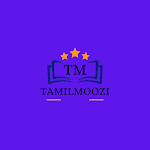The Indian postal network is the largest in the world with 1,55,000 post offices. Of these more than 1,39,000 post offices are located in rural areas. The postal service was opened to the public in the country in 1837. The first Indian postal stamp was issued in 1852 in Karachi. Collecting and delivering mail is the primary function of the department of posts. It introduced the Quick Mail Service in 1975. The Quick Mail Service functions on the basis of the system of PIN (Postal Index Number) code which was introduced in 1972. The premium products include the Money order, e-money order, Speed Post, Express Parcel Post, Business Post, Media Post, Satellite Post, Retail Post, Greeting Post, Data Post, Speed Net and Speed
Passport Services.India has one of the largest telecommunication networks in Asia. Apart from the urban areas more than two-thirds of the villages in India have already been covered with Subscriber Trunk Dialing (STD) telephonefacility, while International communication can be made through ISD (International
Subscriber Dialing). There is an uniform rate of STD facilities all over India. Telephone is a form of oral communication. It is considered very essential for the growth of commerce. It is the most preferred form as it provides instant communication. Mobile phone, fax and internet are the other personal communication used in the country.Trade is an important phenomenon that
decides the economic growth of a country. Trade is an act (or) process of buying, selling or exchanging of goods and services. The primitive method of trade was known as the Barter system where goods were exchanged for goods. Later on, money was introduced as a medium of exchange in buying and selling of goods. The difference in value between the imports and exports is called balance of trade. The situation in which the value of exports exceeds the value of imports is termed as favourable balance of trade and the reverse position is termed as unfavourable balance of trade.The study of one’s own region is the first step to become a global citizen. The purpose of studying our local territory is to understand life in our environment. In the last five lessons, you have learnt about various geographical
characterstics of our country. In this lesson and those that follow, we shall learn about the geography of Tamil Nadu. You will get to know about the etymology, history of formation, location, size, physical divisions, rivers, climate,
soil and natural vegetation of Tamil Nadu in this chapter.Its exquisite physiography and climate makes our state unique in India. It has long and sunny beaches, waterfalls, hills, forests and varied flora and fauna.







0 கருத்துகள்